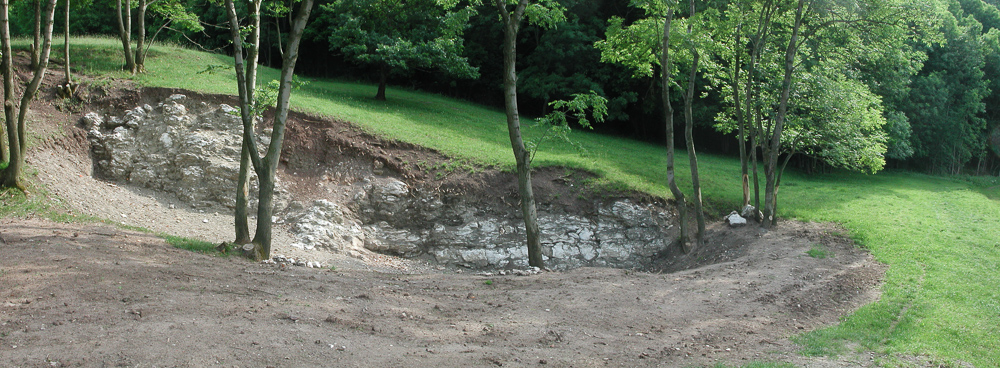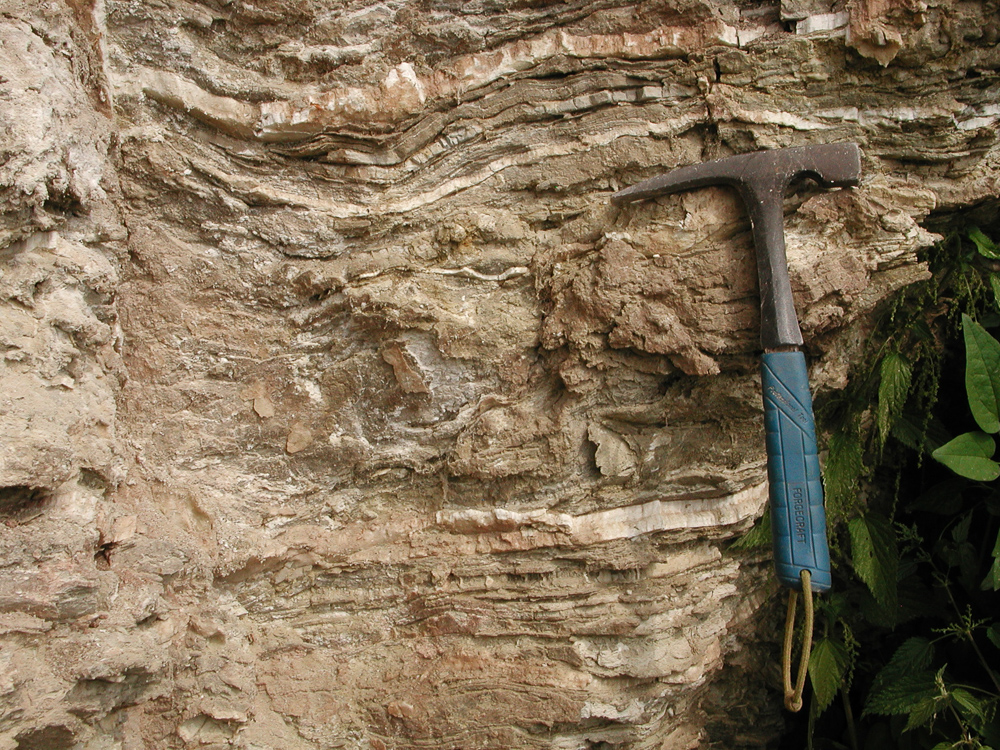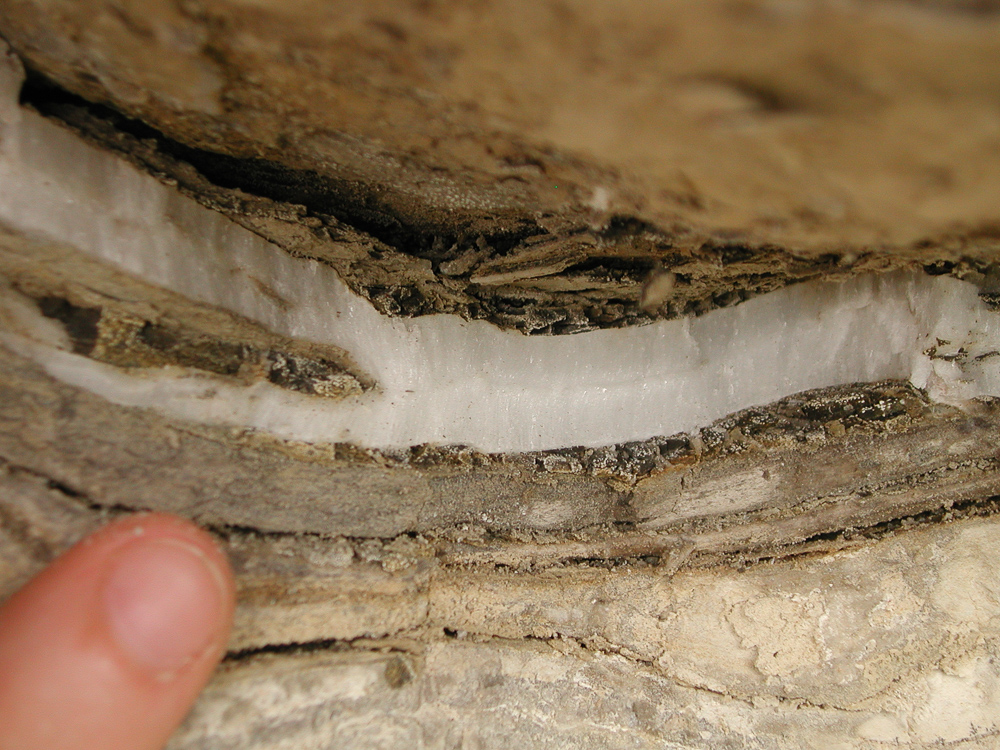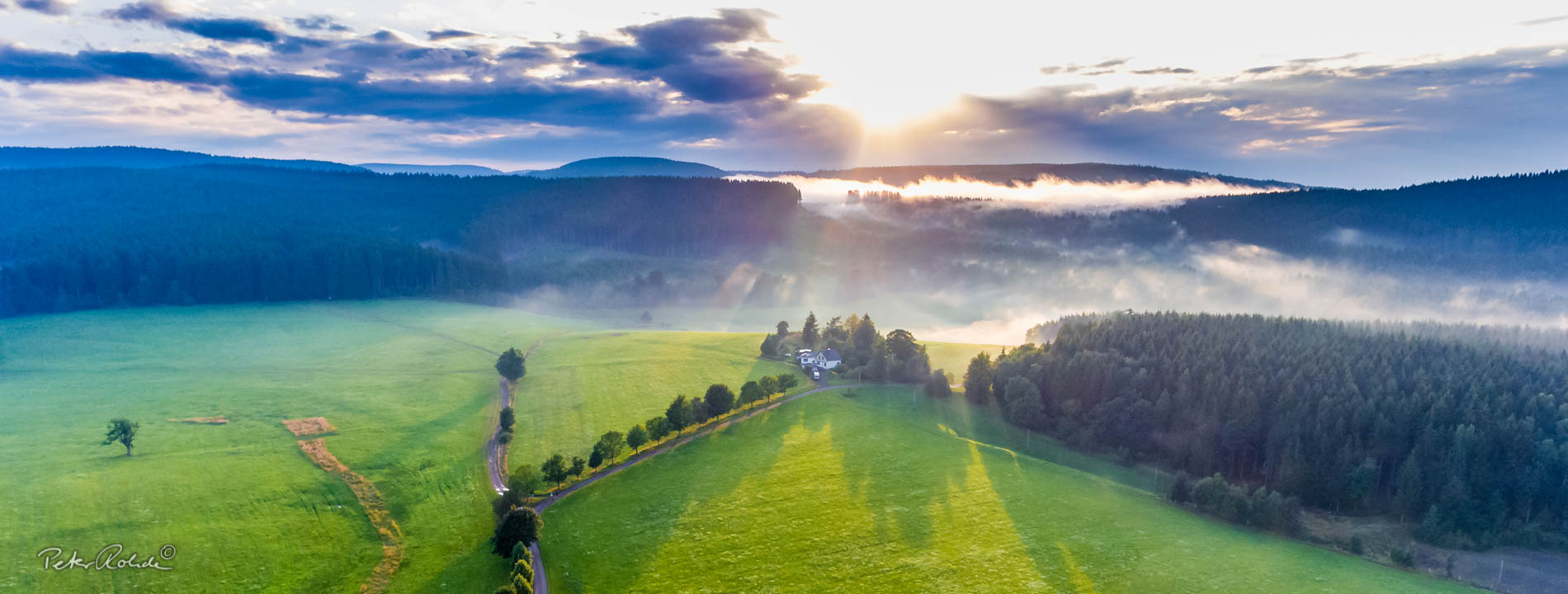

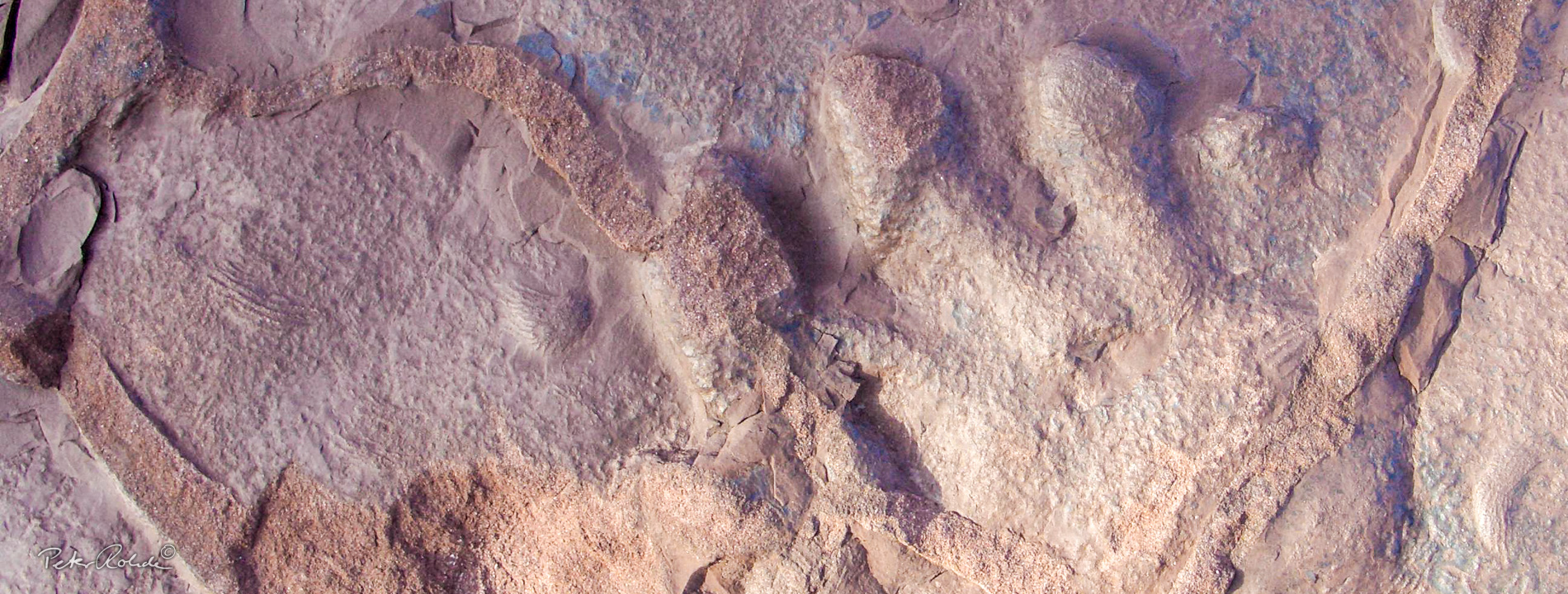


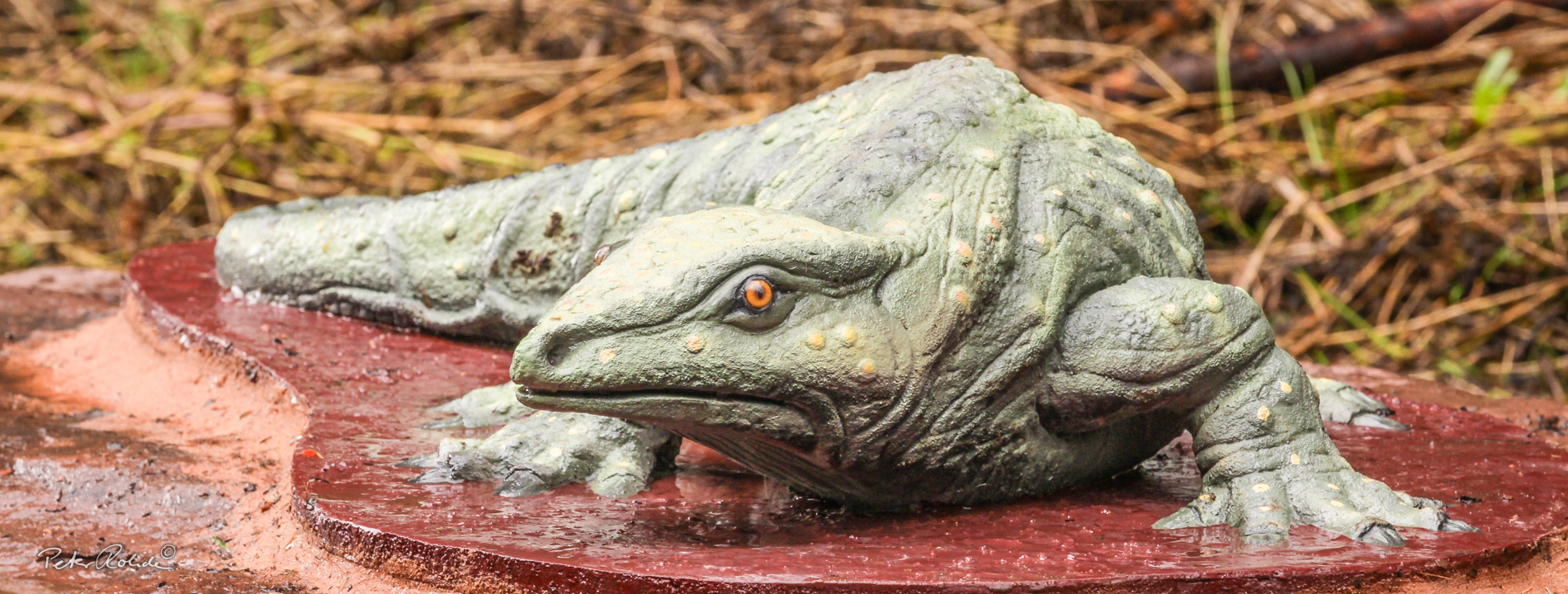
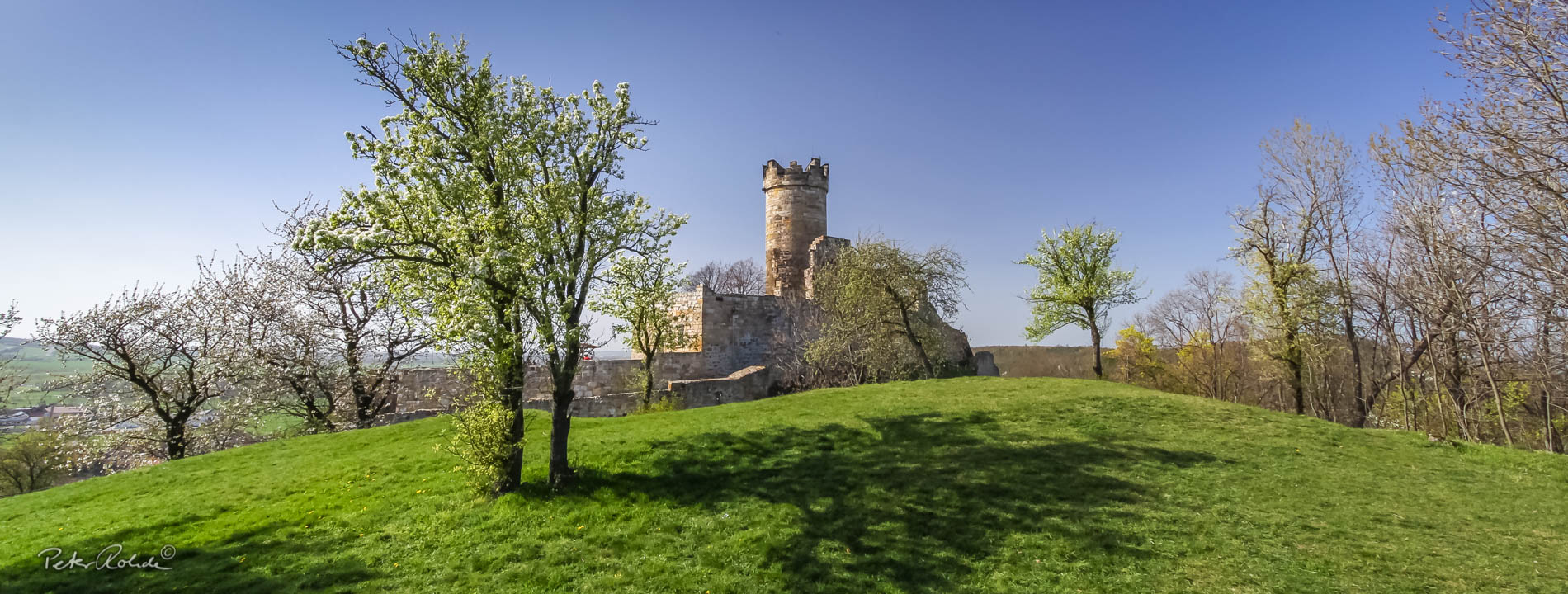

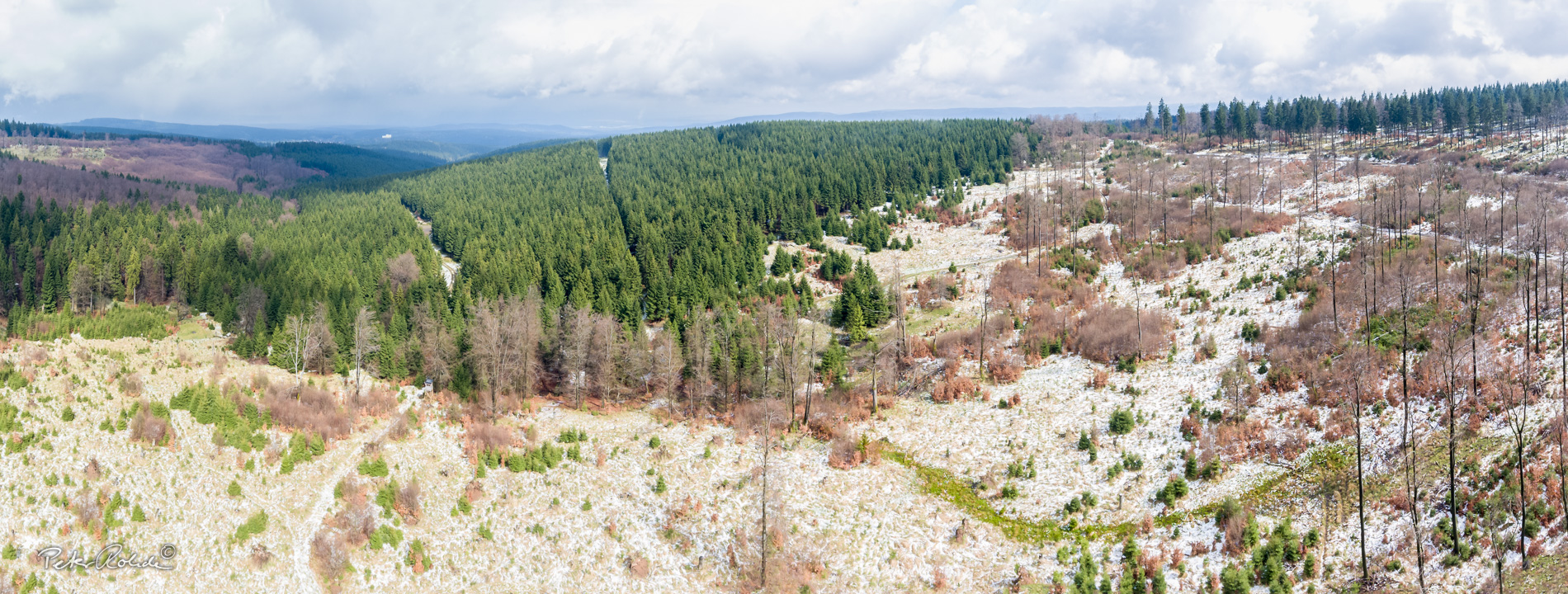









Rock of the year
Rock of the year 2024: Suevite
Southern Germany, Miocene // Around 14.8 million years ago, a cosmic impact occurred in the heart of southern Germany when a huge asteroid with a diameter of around 1.5 kilometres crashed into the earth. This impact caused a dramatic shock wave that shook the subsurface of the area that is now the Swabian-Franconian Jura and threw huge amounts of material into the atmosphere. Today, the impact rock suevite - our rock of the year 2024 - can be found in and around the crater.
"In the middle of Germany, we find one of the best-preserved impact craters in the world - this is a special feature that we want to highlight by nominating suevite as Rock of the Year," says Dr Manuel Lapp, spokesperson for the expert committee. The Professional Association of German Geoscientists has nominated suevite as Rock of the Year 2024. Since 2007, the BDG has been publicising the Rock of the Year to the general public, thus drawing attention to the importance of geosciences and rocks in everyday life.
Occurrence and use
The name suevite goes back to the first description in the Nördlinger Ries in 1919, which is derived from the Latin suevia for Swabia, meaning "Swabian stone". It was not until the 1960s that the formation of the Ries crater and thus also that of the suevite could be explained by an impact, through the detection of minerals contained in the suevite, which only form under extremely high pressures and temperatures. Nowadays, the name suevite is used worldwide for rocks formed by an impact.
Suevite is easy to work and was therefore used as a building stone by the Romans. A well-known example from later times is St George's Church in Nördlingen, completed in 1505, with its 90 metre high "Daniel" tower. The Nördlingen town wall and many prestigious buildings in the town are also made of suevite. Supra-regional examples of its use are mainly known from the turn of the 20th century: the Oberpostdirektion Grottenau in Augsburg (1908), the branch office of the Federal Railway Office in Munich (1916), the Royal Bavarian Post Office at the Ostbahnhof in Munich (approx. 1910), the main telegraph office in Berlin (1916) and the "Specks Hof" exhibition centre in Leipzig (1909). Suevite is still mined today in two quarries for the production of trass cement.
Rock of the year 2024
The presentation and naming in 2024 will take place in cooperation with the UNESCO Global Geopark Ries, the RiesKraterMuseum in Nördlingen, Märker Zement GmbH, the Bavarian Industrial Association for Building Materials, Stones and Earth (BIV), the Senckenberg Natural History Collections Dresden, as well as the Bavarian Geological Service in the State Office for the Environment (LfU) and Schwenk Zement GmbH & Co. KG. Events and publications are organised throughout the year to inform the public about the selected rock, its geology, its function in the natural environment, its use and how it is extracted.
Events for this year's Rock of the Year will be announced on the BDG website.
Ellen Mallas
BDG Professional Association of German Geoscientists
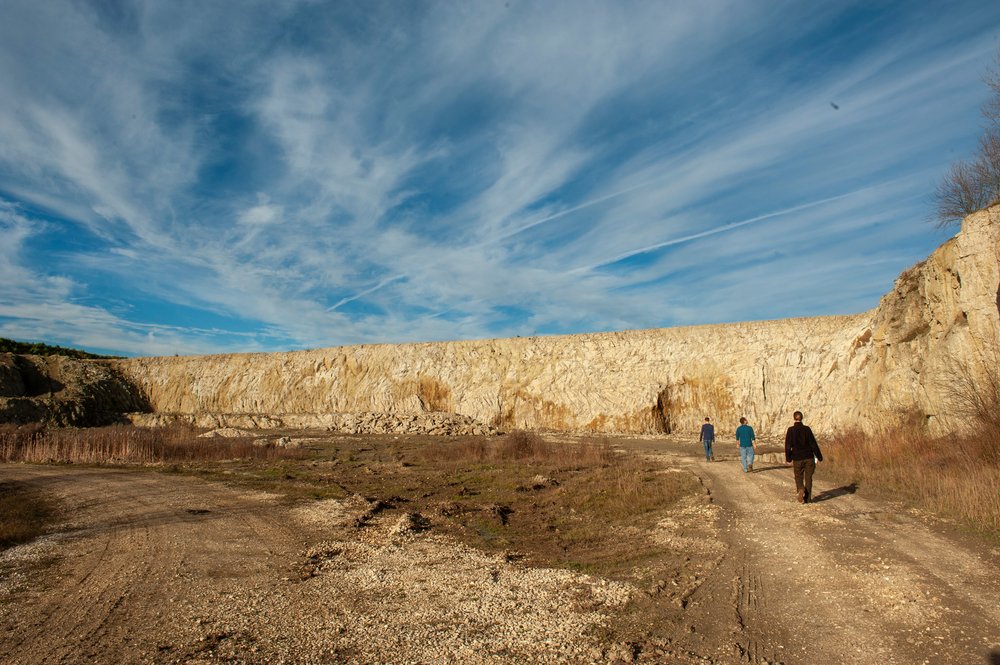
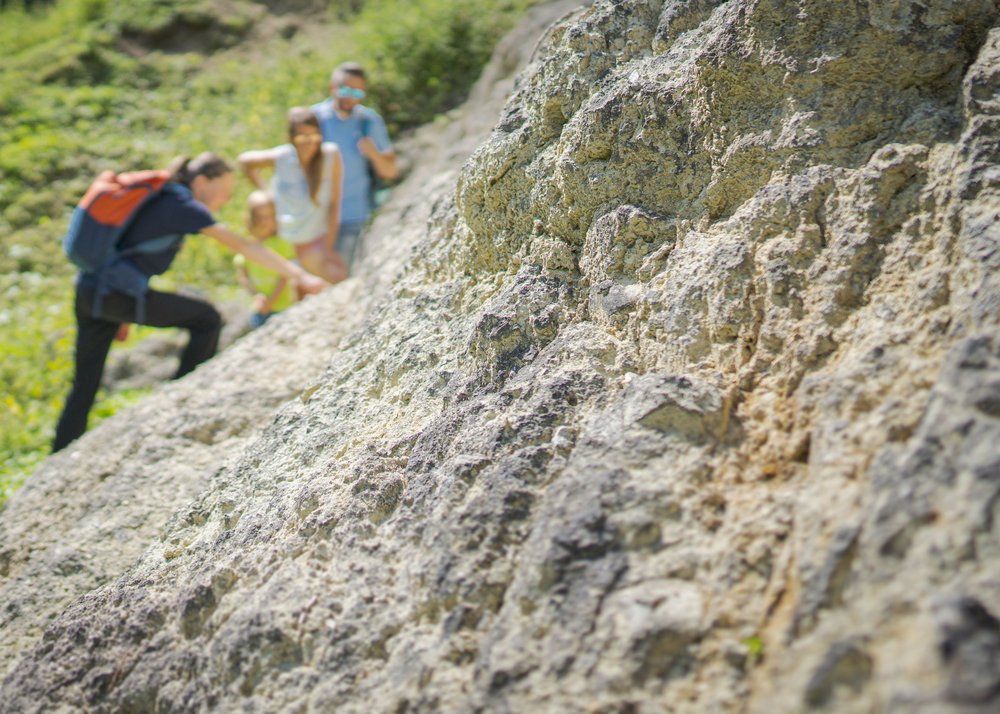
Rock of the year 2023: Greywacke
The Rock of the Year is chosen annually by the BDG, the Professional Association of German Geoscientists, and is intended to draw attention to rocks that are important because of their geological formation or their economic use.
In 2023 it will be greywacke.
Never heard of it? You're not alone, because this rock is relatively unspectacular and little known. But it is impossible to imagine our everyday life without it. You probably know the term "WACKEr stones" from the fairy tale "The Wolf and the Seven Little Kids" by the Brothers Grimm. A wacker stone is a gravel or paving stone made of greywacke. These were sewn into the belly of the fiend after the little goats he had eaten had been freed, and they pulled him into the well in which he finally drowned. So far, so good!
The german term "Grauwacke" originally comes from the Harz mountains and has been used by the miners there since at least 1780 for a grey-greenish, very solid rock. From the German language, the term found its way into all European languages: e.g. English: greywacke, Portuguese: grauvaque.
Greywacke is often used as paving and masonry stones because of its durability, but it is also used as crushed stone, chippings and concrete aggregates. So if you stroll through an old town or go on holiday by train, you are likely to have greywacke under your shoes or the train tracks.
But how was this inconspicuous rock formed?
Greywacke was formed in the sea. The material for it came from rivers that transported it from the mountains and deposited it under water on the flat continental shelf. If these deposits began to slide, for example due to an earthquake or the exceeding of a critical slope angle, the material shifted in a gigantic turbidity current up to 100 km into deeper water. In the process, large and heavy components were more likely to be deposited than fine material, which led to the fact that greywackes often have a so-called graded stratification: coarse at the bottom - fine to finely laminated at the top. Geologists like to speak of a bouma sequence. Such a sequence is typical for greywackes and makes them so varied. Fossils, however, are rather rarely found in it.
There is no greywacke in the UNESCO Global Geopark Thuringia Inselsberg - Drei Gleichen. The nearest occurrences are in the Thuringian Slate Mountains, in the Harz Mountains and in Lusatia. In total, greywacke is mined in 21 German quarries for a wide variety of uses.
Rock of the Year 2022: Gypsum and anhydrite rock
Gypsum and anhydrite rocks consist of a single mineral: calcium sulfate. They are therefore also referred to as monomineral rocks. The main difference between gypsum and anhydrite rocks is the higher crystal water content of gypsum rock. Geologists therefore jokingly refer to anhydrite as gypsum without water. The difference is best seen in the chemical formulas of the minerals:
Gypsum: CaSO4 * 2H2O
Anhydrite: CaSO4
Gypsum and anhydrite rocks usually always occur together, because anhydrite was formed from gypsum. This happened by the superposition of gypsum rock with always new sediments, so that pressure and temperature rose and the crystal water was withdrawn from the gypsum.
Conversely, gypsum can also be formed again from anhydrite over geological periods by water absorption, for example at the earth's surface. If the water penetrates deeper into the rock through fissures and crevices, gypsum can also form at greater depths.
In Thuringia, gypsum and anhydrite rock occur mainly in the southern Harz Mountains, at the Kyffhäuser, in southern Thuringia near Unterwellenborn and at the northern edge of the Thuringian Forest, i.e. also in the UNESCO Global Geopark Thuringia Inselsberg - Drei Gleichen. Gypsum sites existed and still exist, for example, between Schmerbach and Seebach, in the Drei Gleichen area at Eckhardtshög near Mühlberg or in the alabaster quarry below Wachsenburg on GeoRoute 2. Gypsum was also mined in Kittelstahl near Ruhla, in the Herzog-Ernst-Stollen near Friedrichroda (the later Mariengashöhle, GeoRoute 7) and underground in Floh-Seligenthal.
But why is gypsum and anhydrite stone so important that they were chosen as Rock of the Year 2022?
Quite simply: they are raw materials in demand, especially in the construction industry, because many of our modern building materials consist in part or entirely of gypsum or anhydrite: wallboard, gypsum fiberboard, stucco gypsum, gypsum and anhydrite screeds and cement, to name just a few. In addition, gypsum is used in the food industry, in the cosmetics and pharmaceutical industries, in medicine and in agriculture.
In Germany, approximately 10 million tons of gypsum and anhydrite stone are consumed annually. Today, a large part of the gypsum still comes from so-called flue gas desulfurization plants. The FGD gypsum is produced when the sulfur-containing power plant flue gases come into contact with a lime suspension and react chemically to form calcium sulfate. With the phase-out of coal-fired power generation by 2038, around 5 million tons of FGD gypsum will also be lost, which is why demand for natural, chemical (industrial gypsum) and secondary gypsum (recycled gypsum, processed phosphorous gypsum) will increase worldwide in the future.
